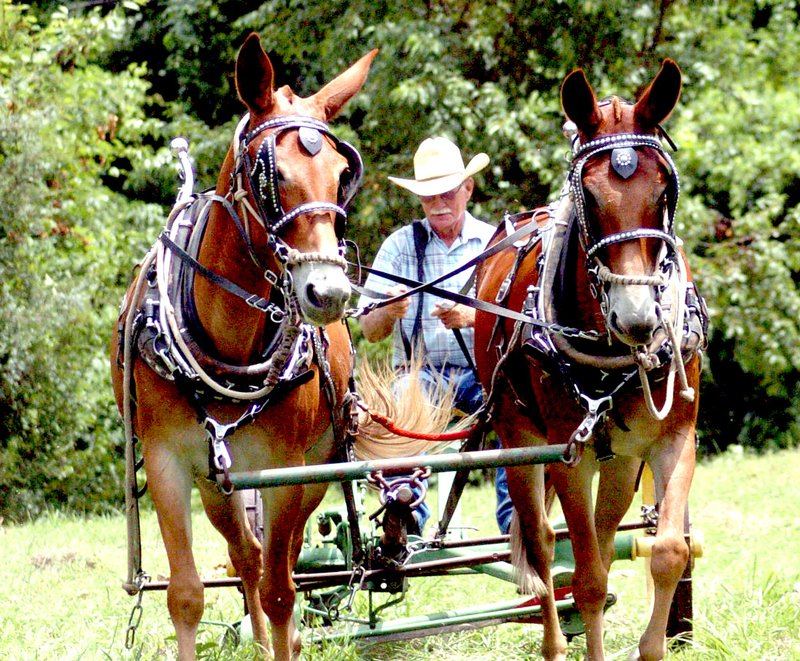GENTRY -- Sitting in the air-conditioned cab of a modern tractor and pulling a hydraulic hay baler, it is easy to forget the way in which the task was performed over a century ago. Oftentimes it took a team of oxen, horses or mules pulling a crude device to bale hay -- taking days to finish a field.
In spite of the extreme working conditions these machines created, one Gentry farmer is determined to preserve this method of baling hay.
Greg Cripps, a member of the Tired Iron of the Ozarks chapter in Gentry, traveled back to a time when farm implements were powered by teams of horses or, in Cripps' case, mules.
Farmers during the late 19th and early 20th centuries did not have the modern conveniences that farmers have today. Instead, they had a hard metal seat on which to ride in the blazing sun while staring at the back side of animals that powered the implement. This was a routine repeated day after day, week after week, until the job was finished.
Cripps is no stranger to this kind of work. He grew up working with teams of mules hooked to a variety of farm equipment.
"I've been working mules and horses about all of my life," Cripps said. "For years, I got away from it, using tractors. But these last 10 years, I got interested in using the old mule-powered equipment."
Cripps acquired his mechanical baler from an auction about 10 years ago. After he restored the baler to working condition, he and his team of mules traveled to several Tired Iron shows near Gentry to demonstrate this unique piece of farm equipment.
This year, a few of Cripps' neighbors asked to see his old equipment at work. A crowd of 85 family members, friends and visitors attended Cripps' demonstration on July 24.
The baler is operated by a drive shaft attached to a pivot at one end and an iron press at the other. The pivot is attached to the baling mechanism via a flat iron rail.
The mule is hooked to a whippletree (the bar behind the animal used to distribute the weight of the mechanism evenly) that's attached to a bar that runs to the pivot.
A rod is attached to the mule's harness and the rotating end of the pivot. The mule and driver walk in a circle around the pivot. The hay is fed into the compactor hopper with a pitchfork from wagons loaded in the field. As the mule moves the shaft, an iron compacting head moves forward, compressing the hay into the bale chamber. The compacting head resets once the mule is at the opposite end of the shaft, and a heavy metal spring resets the mechanism. As the hay is compressed it moves down the baler. Two wood dividers on either end of the bale mark the completed product. The bale is tied together using metal wire. The bale is ready to stack when it's pushed out of the baler.
According to Cripps, a single mule-powered baler can put out 25 square bales of hay per day, as opposed to a tractor which can put out as much as 1,500 square bales a day.
The invention of the tractor revolutionized the agricultural industry and did away with the use of the animal-powered plows and hay balers of a hundred years ago. But, fortunately, a few men like Cripps dedicate themselves to the preservation of these old tools to enable the younger generation to experience the days when simple machines powered by animals helped to put food on the table in every American home.
General News on 07/30/2014
